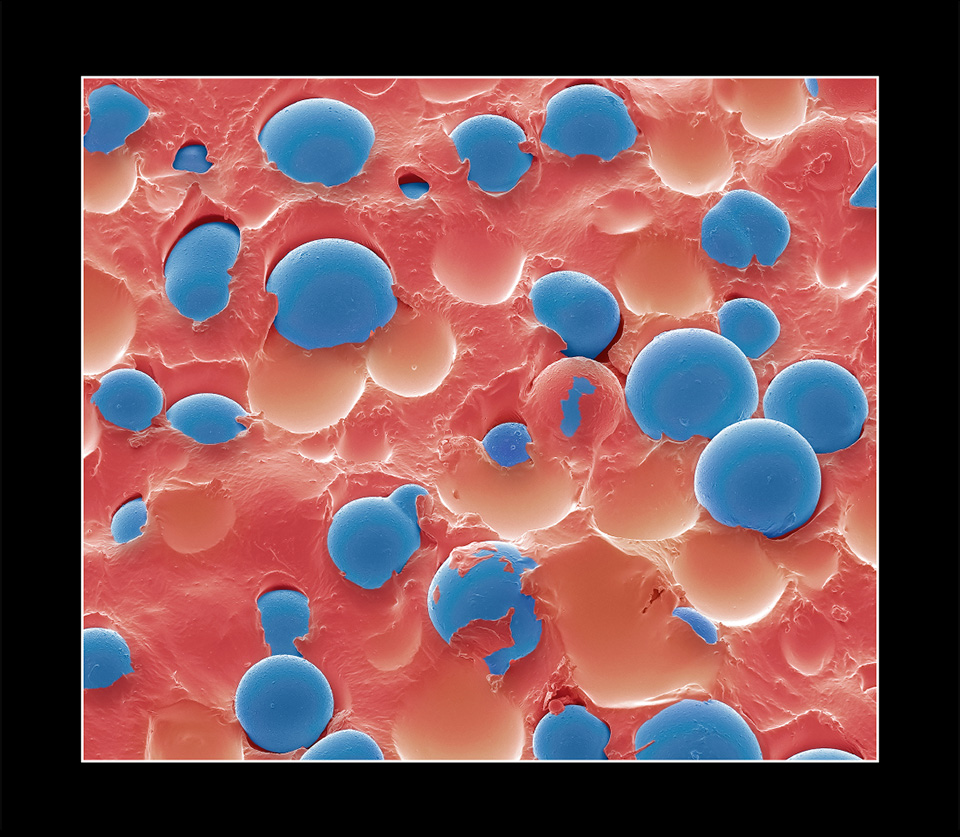
Steve Gschmeissner
Quantum Tunneling Composite, 2018
Scanning electron photomicrograph
Capture magnification ~x615; image colored using Adobe Photoshop
Bedford, England, United Kingdom
This photomicrograph was produced using a scanning electron microscope. It displays the appearance of the cut surface of a quantum tunneling composite (QTC) material that contains various metals. The metals are colored blue in this picture, and non-conducting elastomeric binders—used as pressure sensors—appear light red. In a QTC material and without the application of pressure, the conductive elements are separated at distances too far to conduct electricity. When pressure is applied, the elements migrate closer to one another, and electrons travel through the part of the material that acts as an insulator. This outcome is more evident than would be expected when examining classical (non-quantum) effects independently. Typical evidence of electrical resistance is demonstrated as a linear behavior. While the quantum tunneling behavior is greatly enhanced with decreasing distances, this outcome allows the resistance of the material to change significantly in its pressured and unpressured states. QTC materials are currently used to make membrane switches, such as those found in smartphones or in pressure sensors.
